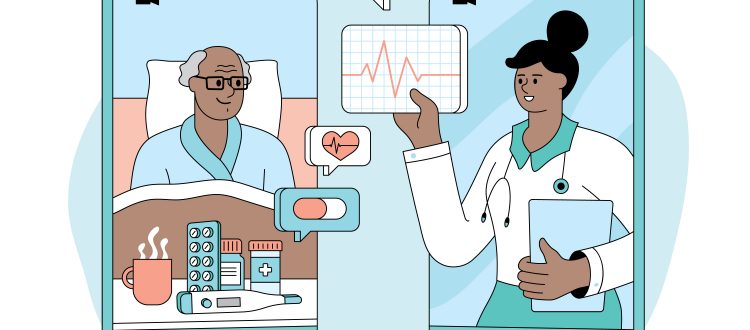How Telehealth has Improved Healthcare in the Last 10 Decades
Telehealth has revolutionized the healthcare industry over the last decade, offering numerous benefits and changing the way patients receive medical care. From virtual doctor visits to remote patient monitoring, telehealth has improved accessibility, convenience, and efficiency of healthcare services.
One of the major benefits of telehealth is increased access to care. For many individuals, particularly those living in rural areas or with mobility limitations, visiting a doctor can be a time-consuming and difficult process. With telehealth, patients can now receive care from the comfort of their own homes, eliminating the need for travel and reducing wait times. Additionally, telehealth can provide access to specialists who may not be available in a patient’s local area.
Another significant benefit of telehealth is improved patient convenience. With telehealth, patients can schedule appointments outside of traditional office hours, making it easier for individuals with busy schedules to receive care. Furthermore, virtual doctor visits often result in shorter appointments, as patients are able to discuss their symptoms and receive a diagnosis without having to undergo physical exams. This can save patients time and provide a more streamlined healthcare experience.
Telehealth has also had a positive impact on healthcare efficiency. With virtual appointments, healthcare providers are able to see more patients in a single day, increasing the amount of care they are able to provide. In addition, telehealth technology has enabled the integration of electronic health records, making it easier for healthcare providers to access and share patient information. This improved information sharing can lead to more accurate diagnoses and better coordination of care between healthcare providers.
In addition to improving access, convenience, and efficiency, telehealth has also been instrumental in managing the spread of infectious diseases. With the recent COVID-19 pandemic, telehealth has played a crucial role in preventing the spread of the virus by allowing patients to receive care without having to leave their homes. Furthermore, telehealth has helped reduce the burden on hospitals and healthcare systems by providing a safe and efficient alternative to in-person appointments.
Finally, telehealth has helped to reduce healthcare costs by eliminating the need for expensive in-person visits and reducing the number of hospitalizations. By enabling patients to receive care from home, telehealth has reduced the need for travel and associated expenses, such as parking, gas, and time off work. Furthermore, virtual visits can be less expensive for both patients and healthcare providers, as they often involve fewer tests and procedures.
In conclusion, telehealth has had a profound impact on the healthcare industry over the last decade. By improving access, convenience, and efficiency, telehealth has made healthcare more accessible and affordable for patients. Additionally, telehealth has played a crucial role in managing the spread of infectious diseases and reducing the burden on healthcare systems. As technology continues to advance and the use of telehealth becomes more widespread, it is likely that the benefits of telehealth will only continue to grow in the years to come.
*This article was produced with the assistance of artificial intelligence. Please always check and confirm with your own sources, and always consult with your healthcare professional when seeking medical treatment.

